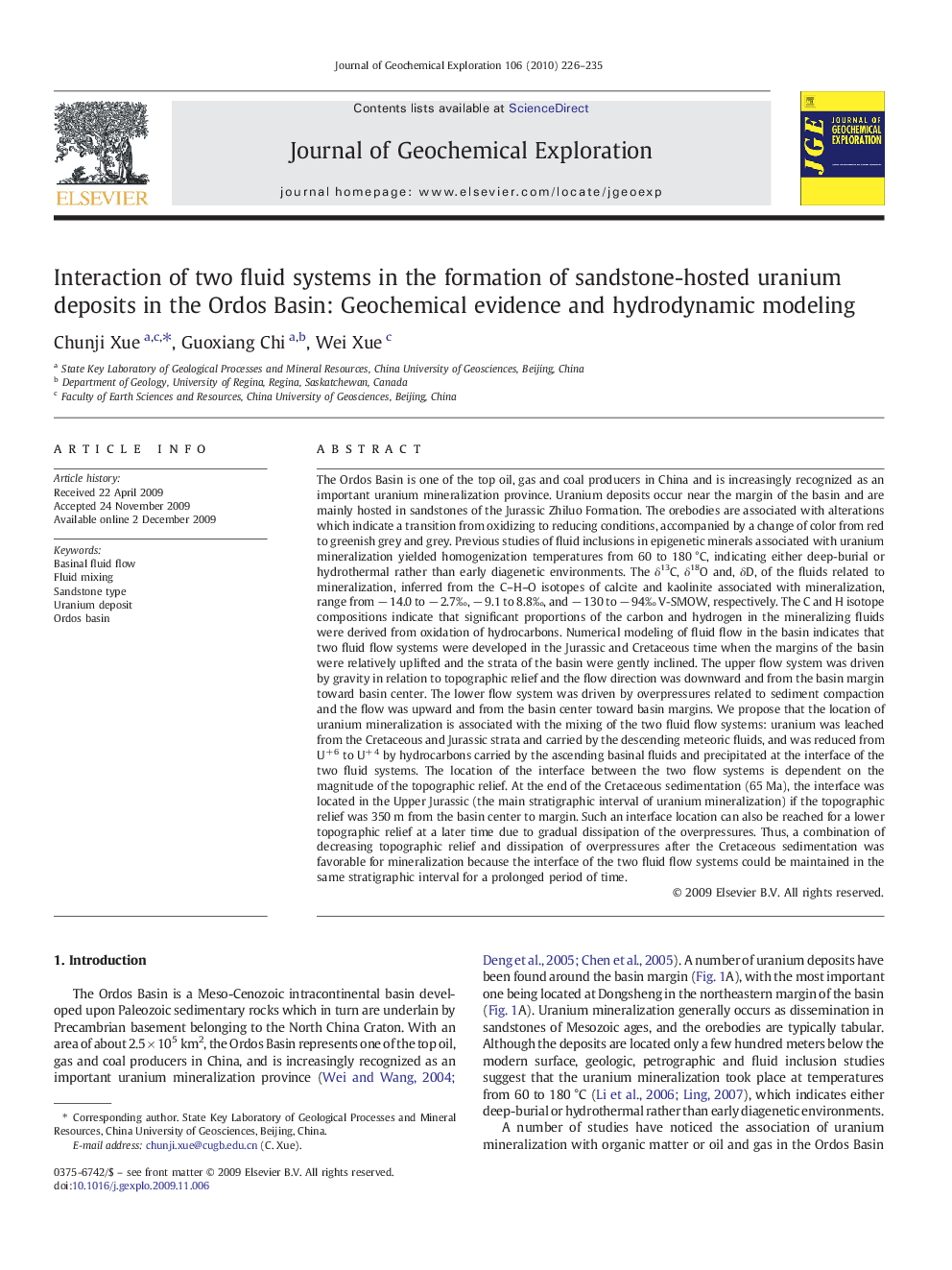| کد مقاله | کد نشریه | سال انتشار | مقاله انگلیسی | نسخه تمام متن |
|---|---|---|---|---|
| 4458016 | 1620946 | 2010 | 10 صفحه PDF | دانلود رایگان |

The Ordos Basin is one of the top oil, gas and coal producers in China and is increasingly recognized as an important uranium mineralization province. Uranium deposits occur near the margin of the basin and are mainly hosted in sandstones of the Jurassic Zhiluo Formation. The orebodies are associated with alterations which indicate a transition from oxidizing to reducing conditions, accompanied by a change of color from red to greenish grey and grey. Previous studies of fluid inclusions in epigenetic minerals associated with uranium mineralization yielded homogenization temperatures from 60 to 180 °C, indicating either deep-burial or hydrothermal rather than early diagenetic environments. The δ13C, δ18O and, δD, of the fluids related to mineralization, inferred from the C–H–O isotopes of calcite and kaolinite associated with mineralization, range from − 14.0 to − 2.7‰, − 9.1 to 8.8‰, and − 130 to − 94‰ V-SMOW, respectively. The C and H isotope compositions indicate that significant proportions of the carbon and hydrogen in the mineralizing fluids were derived from oxidation of hydrocarbons. Numerical modeling of fluid flow in the basin indicates that two fluid flow systems were developed in the Jurassic and Cretaceous time when the margins of the basin were relatively uplifted and the strata of the basin were gently inclined. The upper flow system was driven by gravity in relation to topographic relief and the flow direction was downward and from the basin margin toward basin center. The lower flow system was driven by overpressures related to sediment compaction and the flow was upward and from the basin center toward basin margins. We propose that the location of uranium mineralization is associated with the mixing of the two fluid flow systems: uranium was leached from the Cretaceous and Jurassic strata and carried by the descending meteoric fluids, and was reduced from U+ 6 to U+ 4 by hydrocarbons carried by the ascending basinal fluids and precipitated at the interface of the two fluid systems. The location of the interface between the two flow systems is dependent on the magnitude of the topographic relief. At the end of the Cretaceous sedimentation (65 Ma), the interface was located in the Upper Jurassic (the main stratigraphic interval of uranium mineralization) if the topographic relief was 350 m from the basin center to margin. Such an interface location can also be reached for a lower topographic relief at a later time due to gradual dissipation of the overpressures. Thus, a combination of decreasing topographic relief and dissipation of overpressures after the Cretaceous sedimentation was favorable for mineralization because the interface of the two fluid flow systems could be maintained in the same stratigraphic interval for a prolonged period of time.
Journal: Journal of Geochemical Exploration - Volume 106, Issues 1–3, July–September 2010, Pages 226–235